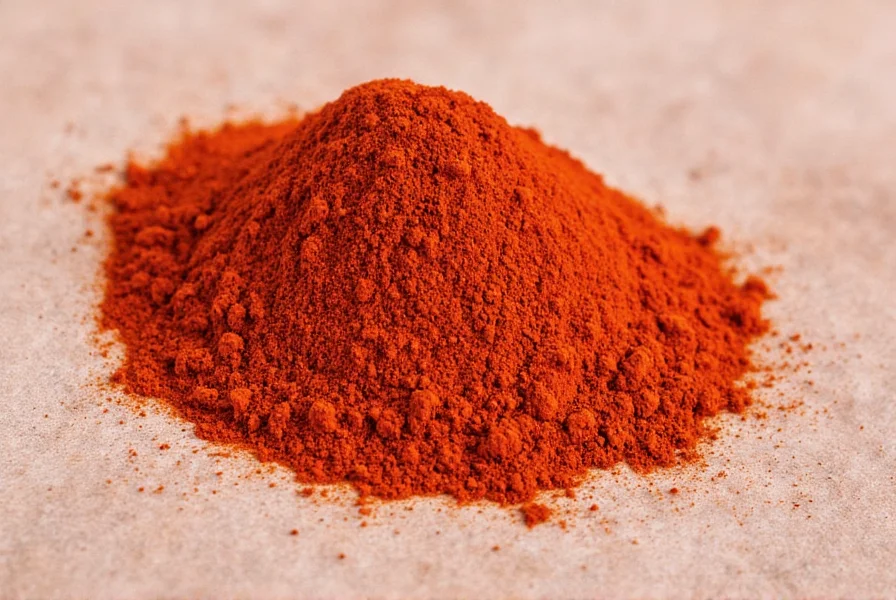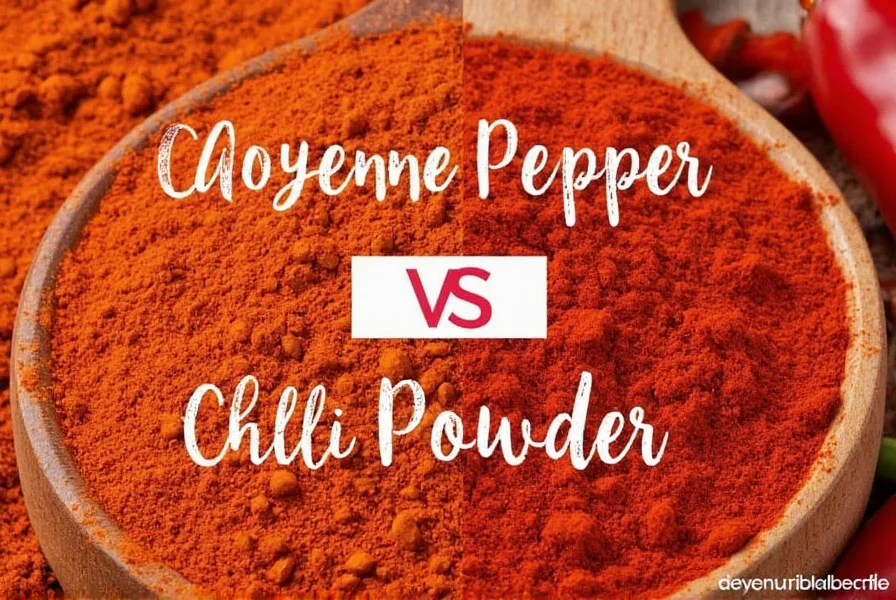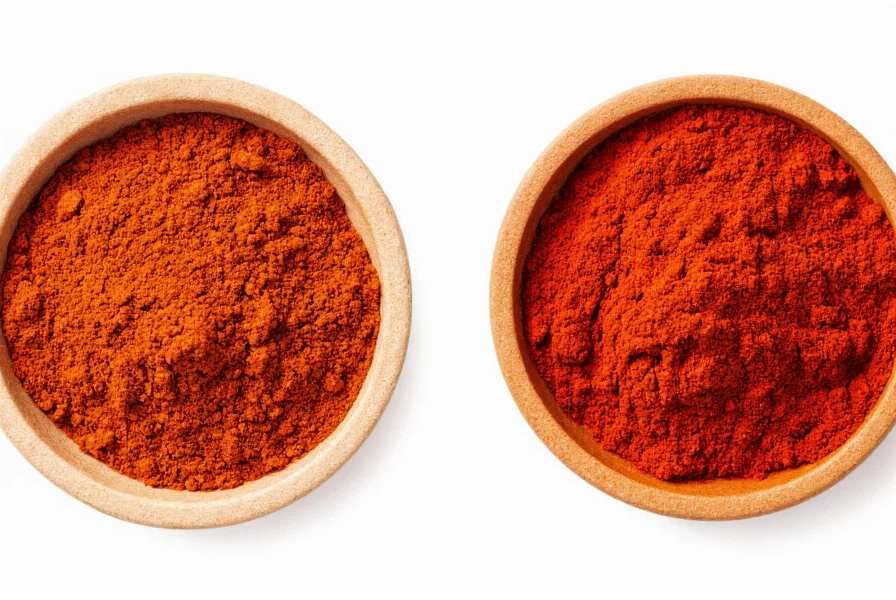When you're following a recipe that calls for chili powder but only have cayenne pepper (or vice versa), knowing the distinction between these two common pantry staples becomes crucial. Many home cooks mistakenly treat them as interchangeable, which can lead to unexpectedly spicy dishes or flavor imbalances. Let's explore the key differences that every cook should understand.
What Exactly Is Cayenne Pepper?
Cayenne pepper comes from a specific type of chili pepper (Capsicum annuum) that originated in French Guiana but gets its name from the city of Cayenne in French Guiana. When dried and ground, it produces a fine, bright red powder with a consistent heat level. Pure cayenne pepper contains only one ingredient: ground cayenne peppers.
The heat level of cayenne pepper typically ranges from 30,000 to 50,000 Scoville Heat Units (SHU), placing it firmly in the medium-to-hot category. Its flavor profile is straightforward—sharp, pungent heat with subtle fruity notes and minimal complexity beyond the heat.

What Makes Up Chili Powder?
Chili powder is actually a spice blend, not a single-ingredient spice. While formulations vary by brand and region, most commercial chili powders contain:
- Ground mild red chili peppers (like ancho or New Mexico chilies)
- Cumin
- Garlic powder
- Onion powder
- Oregano
- Sometimes paprika or kInstruction
The heat level of chili powder is significantly milder than pure cayenne, typically ranging from 500 to 1,500 SHU. This makes it suitable for providing chili flavor without overwhelming heat. The additional spices create a more complex flavor profile that works well in Tex-Mex and Southwestern dishes.
Key Differences at a Glance
| Characteristic | Cayenne Pepper | Chili Powder |
|---|---|---|
| Composition | Single ingredient: ground cayenne peppers | Spice blend with multiple chili varieties plus cumin, garlic, etc. |
| Heat Level (SHU) | 30,000-50,000 (very hot) | 500-1,500 (mild to medium) |
| Flavor Profile | Sharp, direct heat with subtle fruitiness | Complex with earthy, smoky notes from added spices |
| Common Uses | Adding heat to dishes, hot sauces, spice rubs | Tacos, chili con carne, fajitas, Southwest-style dishes |
| Substitution Ratio | Use 1/4 to 1/2 tsp cayenne per 1 tbsp chili powder | Use 2-4 tbsp chili powder per 1 tsp cayenne |
Why People Confuse Cayenne Pepper and Chili Powder
The confusion between cayenne pepper and chili powder stems from several factors. First, both are red powders that look similar in the spice aisle. Second, "chili powder" is sometimes used colloquially to refer to any powdered chili product. Third, some regional variations of chili powder contain cayenne as one of their ingredients, further muddying the distinction.
Another common point of confusion is that "red pepper flakes" (which often contain cayenne) are sometimes mistakenly called "chili flakes." Understanding these terminology differences helps prevent cooking mistakes when following recipes from different sources.
How to Substitute Properly Between Cayenne and Chili Powder
When substituting between these two spices, remember that cayenne is significantly hotter than chili powder. A direct 1:1 substitution will likely make your dish unpleasantly spicy. Here's how to substitute correctly:
- Replacing chili powder with cayenne: Use only 1/4 to 1/2 teaspoon of cayenne for every tablespoon of chili powder called for. Start with less and add more to taste.
- Replacing cayenne with chili powder: You'll need 2-4 tablespoons of chili powder to match the heat of 1 teaspoon of cayenne, but this will also add other flavors to your dish.
When substituting, consider whether your recipe needs just heat (where cayenne works better) or the complex flavor profile of chili powder. For dishes like chili con carne or tacos, chili powder's additional spices contribute significantly to the authentic flavor.

Regional Variations to Consider
The composition of chili powder varies significantly by region and brand. In the United States, chili powder typically refers to the Tex-Mex style blend. However, in the UK and some other countries, "chilli powder" often refers to a single-ingredient powder made from dried chilies, which might be closer to what Americans call cayenne.
Additionally, some specialty chili powders like ancho chili powder or chipotle chili powder contain only one type of chili pepper. These are different from both standard chili powder blends and cayenne pepper. Always check the ingredient list when purchasing to understand exactly what you're getting.
Practical Tips for Using Each Spice
When to use cayenne pepper:
- When you need pure heat without additional flavors
- In hot sauces where you want consistent heat
- For adding kick to Bloody Marys or other cocktails
- When making spice rubs where you control all other flavors
When to use chili powder:
- For authentic Tex-Mex or Southwestern dishes
- When you want complex chili flavor with moderate heat
- In chili con carne, tacos, fajitas, and enchiladas
- When you want the convenience of multiple spices in one container
Storing Your Spices Properly
Both cayenne pepper and chili powder lose potency over time. For best results:
- Store in airtight containers away from light and heat
- Replace ground spices every 6-12 months for optimal flavor
- Buy whole dried chilies and grind them yourself for maximum freshness
- Store in a cool, dark cupboard (not above the stove where heat degrades quality)
Proper storage ensures you get the most accurate heat and flavor from your spices, which is especially important when substituting between cayenne and chili powder.
Frequently Asked Questions
Can I substitute cayenne pepper for chili powder in chili?
Yes, but use only 1/4 to 1/2 teaspoon of cayenne for every tablespoon of chili powder called for. Remember that cayenne provides heat but lacks the complex flavor of chili powder's additional spices like cumin and garlic. You may want to add these separately for authentic flavor.
Is cayenne pepper hotter than chili powder?
Yes, significantly. Cayenne pepper ranges from 30,000-50,000 Scoville Heat Units, while standard chili powder ranges from 500-1,500 SHU. Cayenne is approximately 20-100 times hotter than typical chili powder blends.
What's the difference between cayenne pepper and red pepper flakes?
Cayenne pepper is a fine powder made from ground cayenne peppers, while red pepper flakes are coarsely crushed dried chili peppers (which often include cayenne but may contain other varieties). Red pepper flakes provide visible bits of chili with varying heat levels, while cayenne offers consistent, fine heat distribution.
Can I make my own chili powder to replace cayenne?
You can create a cayenne substitute by mixing 1 part cayenne with 3 parts paprika to reduce the heat while maintaining color. For a more authentic chili powder blend, combine 2 tbsp ancho chili powder, 1 tsp cumin, 1/2 tsp garlic powder, 1/4 tsp oregano, and a pinch of cayenne for heat.
Why does my chili powder contain cayenne?
Some chili powder blends include a small amount of cayenne to boost heat levels. Check the ingredient list—quality blends will list cayenne specifically if it's included. This is different from pure cayenne pepper, which contains only ground cayenne peppers with no additional ingredients.











 浙公网安备
33010002000092号
浙公网安备
33010002000092号 浙B2-20120091-4
浙B2-20120091-4